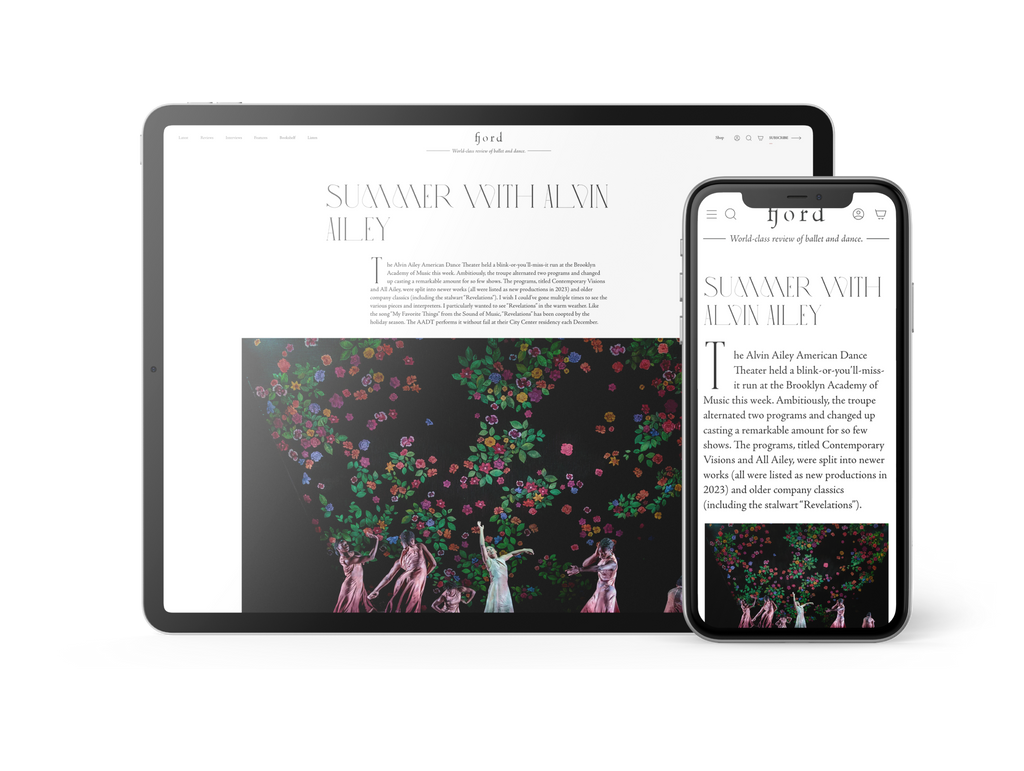Ryan Tomash Steps into a New Role
Back in October, New York City Ballet got a new cowboy. His arrival occurred in the final section of George Balanchine’s “Western Symphony.”
Continua a leggere
World-class review of ballet and dance.
Upon entering the small blackbox theater of Dixon Place on Thursday, December 9, 2021, the all-white papered stage of Laura Peterson Choreography’s “Interglacial” was pristinely set with four large crumpled up balls of paper and a thin line of light, nodding to minimalist artist Dan Flavin and bisecting the upstage wall. I am both old enough to remember when Dixon Place performances were in an actual New York City living room and familiar enough with Peterson’s work to know of her obsession with Flavin (for instance: her 2007 work “I Love Dan Flavin”). I was delighted to be among familiar cultural anchors again—shouldn’t we all just take a moment to scream with joy every time we encounter artists and presenters who have prevailed despite the last two years?!—and looking forward to finding out how the four dancers would further shape this space.
Performance
Place
Words

Jennifer Payán (low) and Laura Peterson in “Interglacial” by Laura Peterson Choreography. Photograph by Peter Yeasley


“Uncommonly intelligent, substantial coverage.”
Your weekly source for world-class dance reviews, interviews, articles, and more.
Already a paid subscriber? Login
Back in October, New York City Ballet got a new cowboy. His arrival occurred in the final section of George Balanchine’s “Western Symphony.”
Continua a leggereWhen Richard Move enters from stage left, his presence is already monumental. In a long-sleeved gown, a wig swept in a dramatic topknot, and his eyes lined in striking swoops, the artist presents himself in the likeness of Martha Graham—though standing at 6’4, he has more than a foot on the late modern dance pioneer.
Continua a leggerePerhaps not since Mikhail Fokine’s 1905 iconic “The Dying Swan” has there been as haunting a solo dance depiction of avian death as Aakash Odedra Company’s “Songs of the Bulbul” (2024).
Continua a leggereDance, at its best, captures nuance particularly well, allowing us to feel deeply and purely. In its wordlessness, it places a primal reliance on movement and embodied knowledge as communication all its own. It can speak directly from the body to the heart, bypassing the brain’s drive to “make sense of.”
Continua a leggere
comments